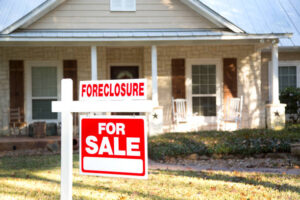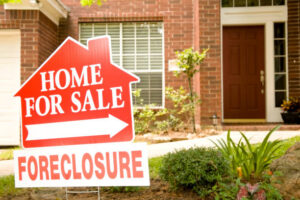Buying a Home Close to Power Lines: What You Need to Know
Introduction
When considering the question, “Should I Buy a House Near Power Lines?”, there are several real estate factors to think about. This article explores these factors to help potential homebuyers navigate the complexities of purchasing a house near power lines. It’s important to evaluate homes in these areas because of possible effects on health, appearance, and property value.
Power lines are everywhere—urban, suburban, and rural areas all have them. Each type of area has its own challenges and advantages. By understanding the various kinds of power lines, from small local ones to large high-voltage towers, we can better understand how common they are and how they impact residential neighborhoods. While some people may see them as ugly or worry about their health effects, others might appreciate benefits like lower electricity bills and fewer power outages.
By exploring these topics in depth, we aim to give potential buyers the information they need to make smart choices in the constantly changing real estate market. For instance, using resources like VivCapital, which offers a wide range of real estate listings, can help homebuyers find properties that meet their requirements while also taking into account their proximity to power lines. Furthermore, tools such as VivCapital’s HMLS provide valuable information about market trends and property values, assisting buyers in making well-informed decisions.
Understanding Power Lines and Their Health Risks
Power lines are essential parts of our modern infrastructure. They are responsible for carrying electricity over long distances. High-voltage transmission lines transport electricity from power plants to substations, while low-voltage lines distribute electricity from substations to homes and businesses. We can see these power lines stretching across cities, winding through suburban neighbourhoods, and scattered throughout rural areas.
Electromagnetic Fields (EMFs) and Their Sources
When electricity flows through power lines, it creates something called electromagnetic fields (EMFs). These invisible energy fields are produced by various sources such as appliances, wiring inside houses, and both overhead and underground power lines. It’s important to understand what EMFs are because they play a significant role in discussions about health concerns related to living near power infrastructure.
Health Implications Linked to EMFs
There has been ongoing debate about the potential health risks associated with exposure to EMFs. Some studies suggest that prolonged exposure to EMFs, especially from high-voltage power lines, may increase the likelihood of certain cancers like childhood leukemia. However, scientific evidence on this matter is still inconclusive. The link between EMF exposure and cancer risk becomes weak beyond a distance of approximately 164 feet from power lines.
The World Health Organization (WHO) has classified EMFs as “possibly carcinogenic,” meaning there is some evidence for risk but it is not definitive. The WHO also emphasizes that common household items often emit higher levels of EMF radiation compared to power lines.
Situating Power Lines in Different Settings
Power lines are intentionally placed based on geographical and demographic factors:
Urban Areas: These areas usually have a complex network of both transmission and distribution lines due to higher energy demands.
Suburban Areas: Suburbs typically have fewer high-voltage lines but still depend on an extensive system for efficient energy distribution.
Rural Areas: In rural regions, there are longer distances between poles or towers because of lower population density.
These variations affect both the amount of EMF exposure residents may encounter and how close they live to these infrastructures.
Understanding these differences can help individuals make informed decisions when buying properties near power lines. By being aware of the types and effects of living close to power lines, potential buyers can better evaluate their comfort levels regarding these health concerns.
Evaluating Property Value and Marketability Issues Near Power Lines
- Impact on Property Value
The proximity of a home to power lines can significantly affect its market value. Homes situated close to high-voltage power lines often experience a depreciation in value due to perceived health risks and aesthetic concerns. Studies indicate that property values can decline by as much as 44.9% when located near these towering structures. This reduction is influenced by several factors including the visible presence of the power lines and community perceptions regarding health implications.
- Resale Value Challenges
Selling a home near power lines can present unique challenges. Buyers tend to be wary of the potential health risks associated with electromagnetic fields (EMFs), even though scientific evidence remains inconclusive. This wariness can reduce buyer interest, elongate selling times, and necessitate price reductions to attract prospective buyers who might be willing to overlook the presence of power lines.
For homeowners facing such challenges, exploring options like turning the property into a rental portfolio could be a viable solution. This strategy not only helps in managing the property effectively but also provides a steady income stream while waiting for market conditions to improve.
- Marketability Concerns
Homes near power lines often face additional marketability issues which can include:
- Reduced Visual Appeal
The presence of large, looming structures can detract from the natural beauty of an area, impacting a home’s curb appeal.
- Sound Pollution
High-voltage lines may emit a continuous hum or buzzing sound, which becomes more pronounced during rainy weather.
These factors collectively influence both the immediate appeal and long-term resale value of homes near power lines. For potential buyers considering such properties, it’s crucial to weigh these elements against other benefits that might offset some of these concerns.
Pros and Cons of Buying a House Near Power Lines
Exploring the pros and cons of living near power lines helps potential homeowners answer the question: “Should I Buy a House Near Power Lines?” While each situation is unique, understanding the general advantages and disadvantages can guide informed decision-making.
Potential Advantages
- Lower Electricity Costs: Proximity to power lines may lead to reduced electricity rates due to decreased transmission losses, offering potential savings in energy bills over time.
- Fewer Outages: Homes closer to power infrastructure often experience fewer disruptions in service. In areas prone to outages, this can be a significant benefit, as utility companies prioritize maintenance and repairs on primary distribution lines.
- Faster Restoration Times: Being near critical electrical infrastructure means quicker responses to any issues that arise, ensuring minimal disruption in everyday life.
Disadvantages
- Reduced Visual Appeal: The presence of large power lines can detract from the aesthetic quality of a neighborhood. This reduction in visual attractiveness might not align with personal preferences for beautiful landscapes or curb appeal.
- Longer Selling Times: Properties near power lines often face challenges in attracting buyers. As many individuals cite concerns about aesthetics or health risks, selling these homes could take longer than average, affecting marketability. For those considering this route, these tips for selling your home could prove beneficial.
Navigating these factors is crucial when considering homes near power lines. Balancing these pros and cons will aid potential homebuyers in making choices that align with their priorities and lifestyle. If you’re leaning towards purchasing such a property, it might be helpful to follow this step-by-step guide on how to buy a house which provides expert tips on what to look for when making your purchase.
Practical Considerations for Homebuyers Considering Properties Near Power Lines
When looking to buy a house near power lines, it’s crucial to evaluate risks of buying a house near power lines with careful consideration and professional guidance. Here are some practical tips and insights to help in making an informed decision:
Consult with Real Estate Agents
- Local Expertise: Real estate agents provide valuable insights into local market conditions. Their familiarity with the area’s property trends, values, and community sentiments can be instrumental in understanding how proximity to power lines might impact your investment. For instance, you can learn more about how real estate commission works which will give you an idea about the earnings potential of real estate agents in Columbus, Ohio.
- Lifestyle Impact: They can offer advice on lifestyle considerations, such as potential noise from power lines or limitations on landscaping due to easements.
Evaluating Properties Effectively
Property Inspection: Conduct thorough inspections focusing on structural integrity and any peculiarities associated with being near power lines. Pay attention to how these may affect comfort and safety.
Distance Assessment: Measure the property’s distance from the nearest power line. A safe distance, typically 700-1000 feet for limited EMF exposure, can be reassuring.
Inquire About Utilities and Services
Electricity Costs & Outages: Investigate potential benefits like lower electricity costs or fewer outages. Properties near power lines may enjoy quicker response times during outages.
Understanding these aspects can guide you toward a balanced perspective on purchasing a home near power lines. Viv Capital’s commitment to transparency and integrity ensures our team of professional real estate agents is well-equipped to assist in evaluating these unique properties. With a focus on sustainable development and community growth, we aim to help clients make informed decisions that align with their long-term goals.
Community Perspectives and Market Trends in California Regarding Homes Close to Power Lines
California real estate market trends reveal a complex landscape where community attitudes significantly influence buying decisions, especially concerning properties near power lines. The Golden State’s diverse geography and densely populated urban areas mean that power lines are a common sight, yet they elicit mixed reactions among potential homeowners.
- Community Attitudes
Many Californians express concern over the aesthetic impact of power lines, often citing them as eyesores that disrupt the natural beauty of their surroundings. Additionally, apprehensions about potential health risks associated with electromagnetic fields (EMFs) contribute to a cautious approach when considering these properties. Despite inconclusive scientific evidence linking EMFs to health issues, the perception of risk can deter buyers.
- Market Dynamics
Buyer preferences in California’s competitive real estate market are shaped by various factors, including environmental awareness and lifestyle priorities. Properties located near power lines may experience slower sales due to diminished visual appeal and perceived health risks. This trend can lead to reduced asking prices compared to similar homes situated further away from power infrastructure.
- Impact on Property Value
Studies indicate that homes near high-voltage towers might see value reductions up to 44.9%, depending on proximity and visibility. This depreciation presents an opportunity for buyers seeking lower entry costs, though it may also pose challenges for future resale.
Viv Capital recognizes these dynamics and leverages its expertise to guide clients through such nuanced market conditions. By understanding both the apprehensions and opportunities present in the California real estate market, Viv Capital ensures informed decision-making for those contemplating homes near power lines.
Making an Informed Decision About Buying a House Near Power Lines
When faced with the question, “Should I Buy a House Near Power Lines?”, it’s essential to make an informed decision in real estate. Weighing the pros and cons is crucial:
Advantages might include lower purchase prices and reduced competition, along with potential benefits like decreased electricity costs and fewer outages.
Disadvantages could include concerns about visual appeal, potential health risks from EMFs, and challenges in resale value and marketability.
Gathering information about local conditions, talking to real estate professionals such as those at Viv Capital, and considering community perspectives can help you make an informed choice. With our client-focused approach, we are dedicated to helping you navigate this complex situation with honesty and excellence. Whether improving community development or ensuring transparency in transactions, Viv Capital is here to assist you on your real estate journey.

A Guide to Buying Distressed Homes: Opportunities in Real Estate
A Guide to Buying Distressed Homes: Opportunities in Real Estate The real estate market offers

Buying A House With Bad Credit: A Guide To Your Home Loan Options
Buying A House With Bad Credit: A Guide To Your Home Loan Options Buying a

Distressed Property: Everything You Need to Know
Distressed Property: Everything You Need to Know If you are searching for distressed properties for

Top Strategies for New Investors in Competitive Real Estate Markets
Top Strategies for New Investors in Competitive Real Estate Markets he world of real estate

The Role of Tech in Investment Real Estate: Trends in Digital Property Tools
The Role of Tech in Investment Real Estate: Trends in Digital Property Tools Introduction At

Buying a Home Close to Power Lines: What You Need to Know
Buying a Home Close to Power Lines: What You Need to Know Introduction When considering
